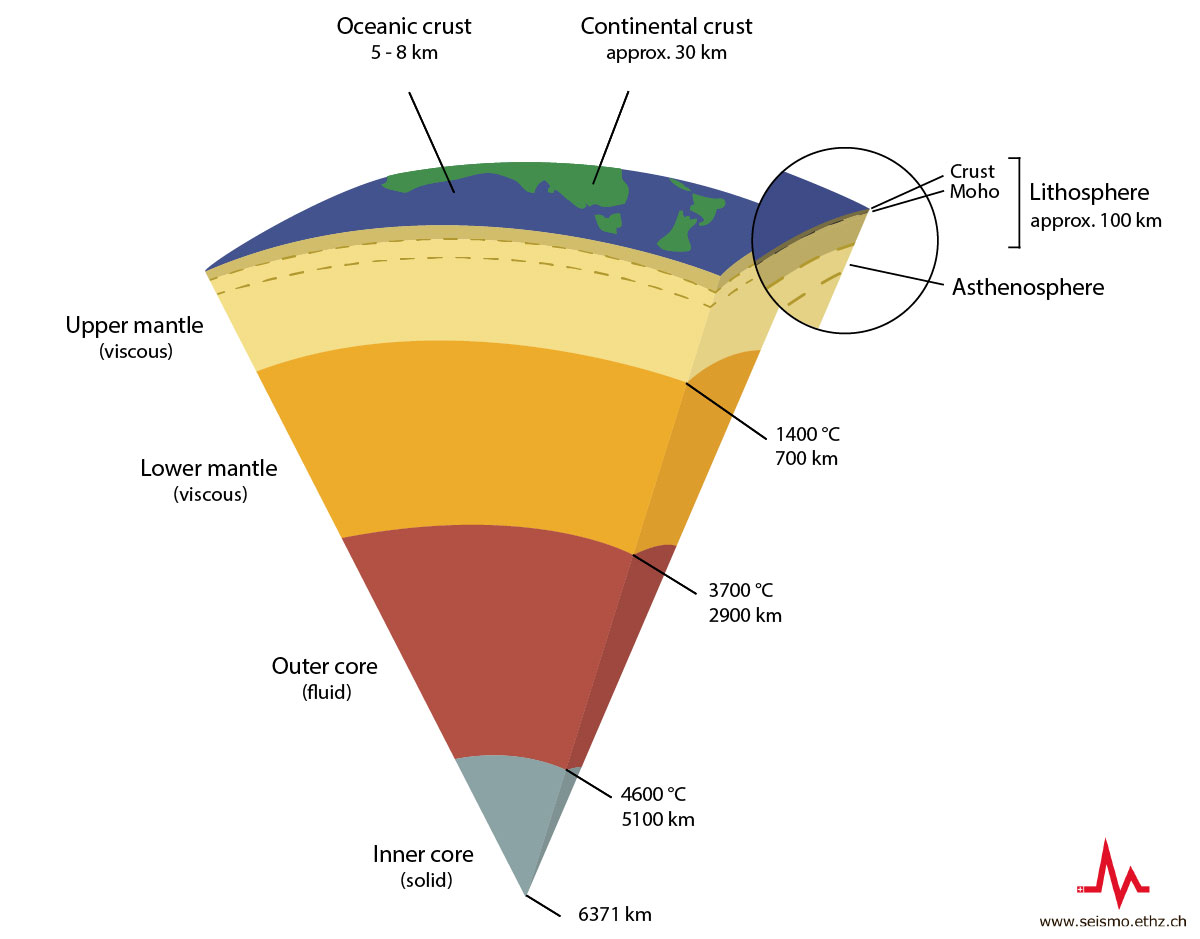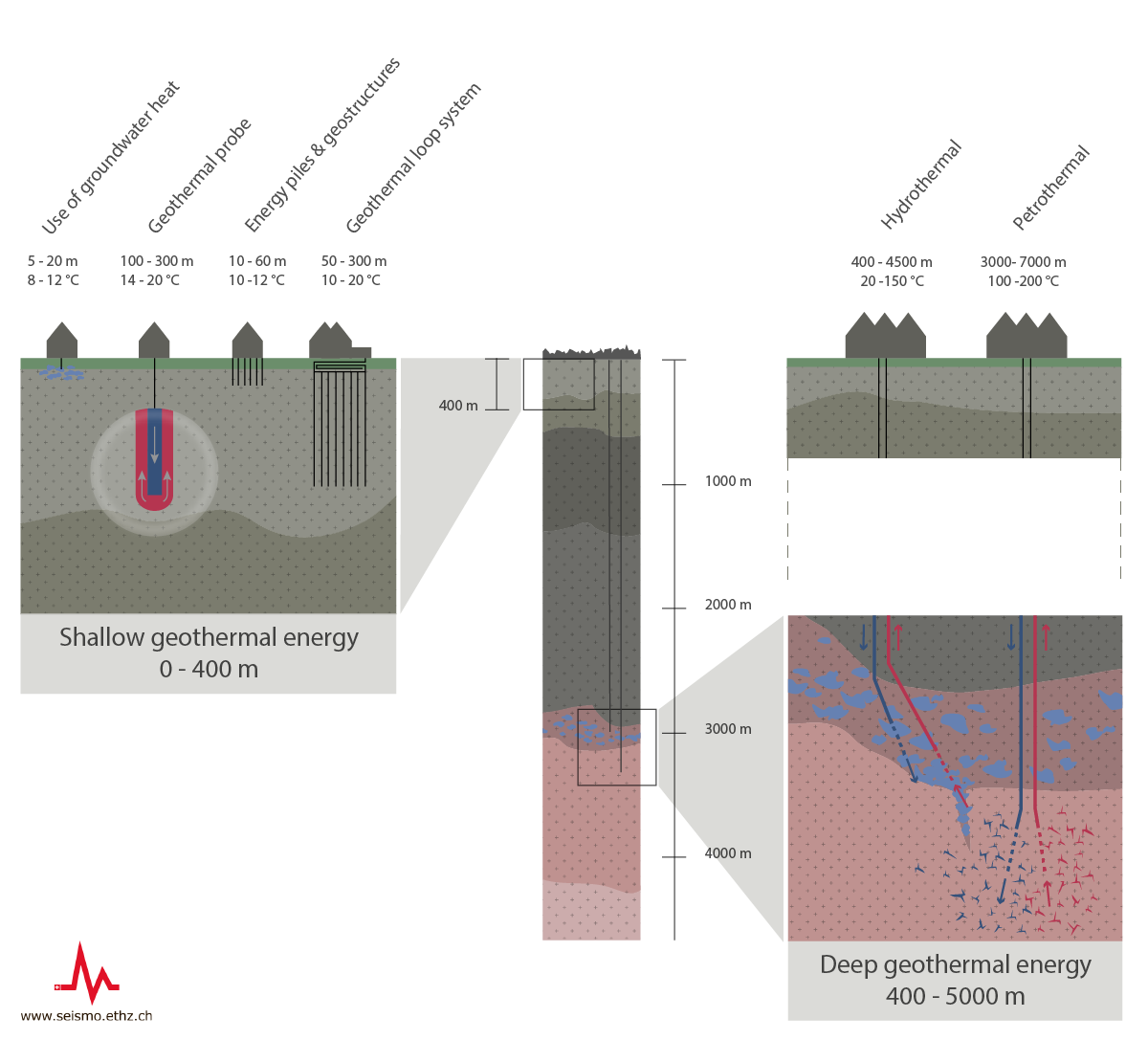Geothermal Energy in brief
Geothermal energy is energy stored in the form of heat below the surface of the earth. There is a significant quantity of heat stored in the earth’s interior, and it originates primarily from the decay energy of naturally radioactive isotopes, which can be found in the earth’s crust and mantle.
In principle, the deeper you go into the earth, the warmer it becomes. On average, the temperature rises by approximately 3°C for every 100 meters further away from the surface toward the center of the earth. This corresponds to a normal geothermal gradient (Geology Portal "Geothermal energy in Switzerland"). What is more, heat conduction is an extremely slow process: just 50 to 100 meters below the earth’s surface comes the start of the region in which climatic changes above the surface no longer have an influence on the temperature of the subsoil (SFOE Brochure "Nutzung der Erdwärme" (not available in English)). At a depth of 5'000 meters in Switzerland, temperatures reach between 150°C and 200°C (SFOE "Geothermal energy"). According to current understanding, temperatures are assumed to reach over 6'000°C in the earth’s core and 1'400°C in its upper crust.

There are, however, many thermal anomalies – i.e. regions with significantly higher temperature gradients – particularly in volcanic areas. This applies for example to Iceland, Italy, Indonesia, and New Zealand. At various points in these countries, nature itself provides the necessary circulatory system for driving heat to the surface (hot springs and geysers, for example). Anywhere else, drilling must be carried out using feed pumps or geothermal probes with circulation pumps in order to make use of the heat. Various technologies are available for this purpose. A distinction is made between shallow geothermal energy (up to approximately 400 meters) and deep geothermal energy.

Within the framework of the GEOBEST2020+ project supported by SwissEnergy, the SED therefore offers competent and project-based seismological consulting and monitoring services for national, cantonal, and local supervisory authorities. Services are only provided to the industrial sector if these do not impact the independence of the SED in any way.